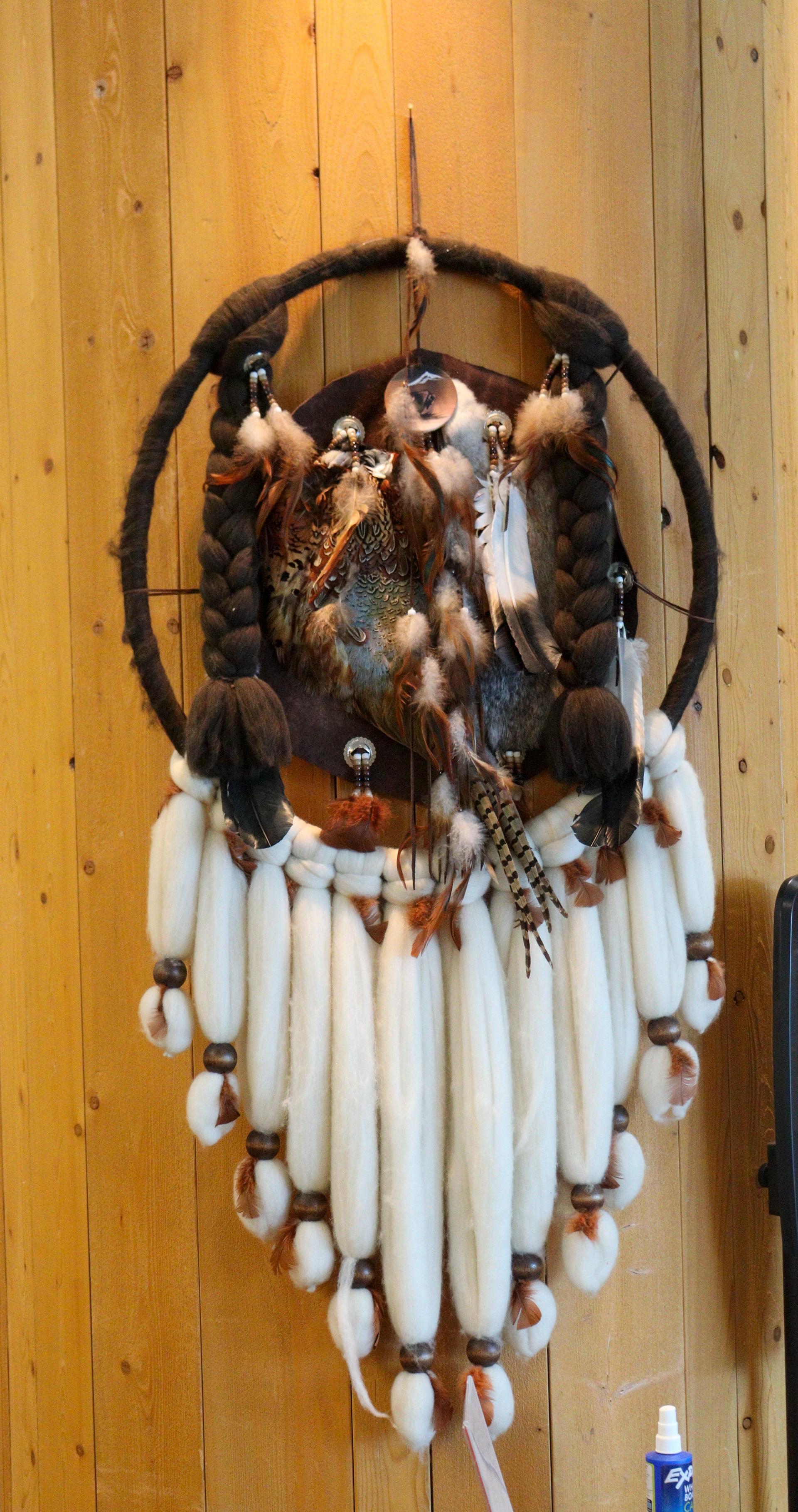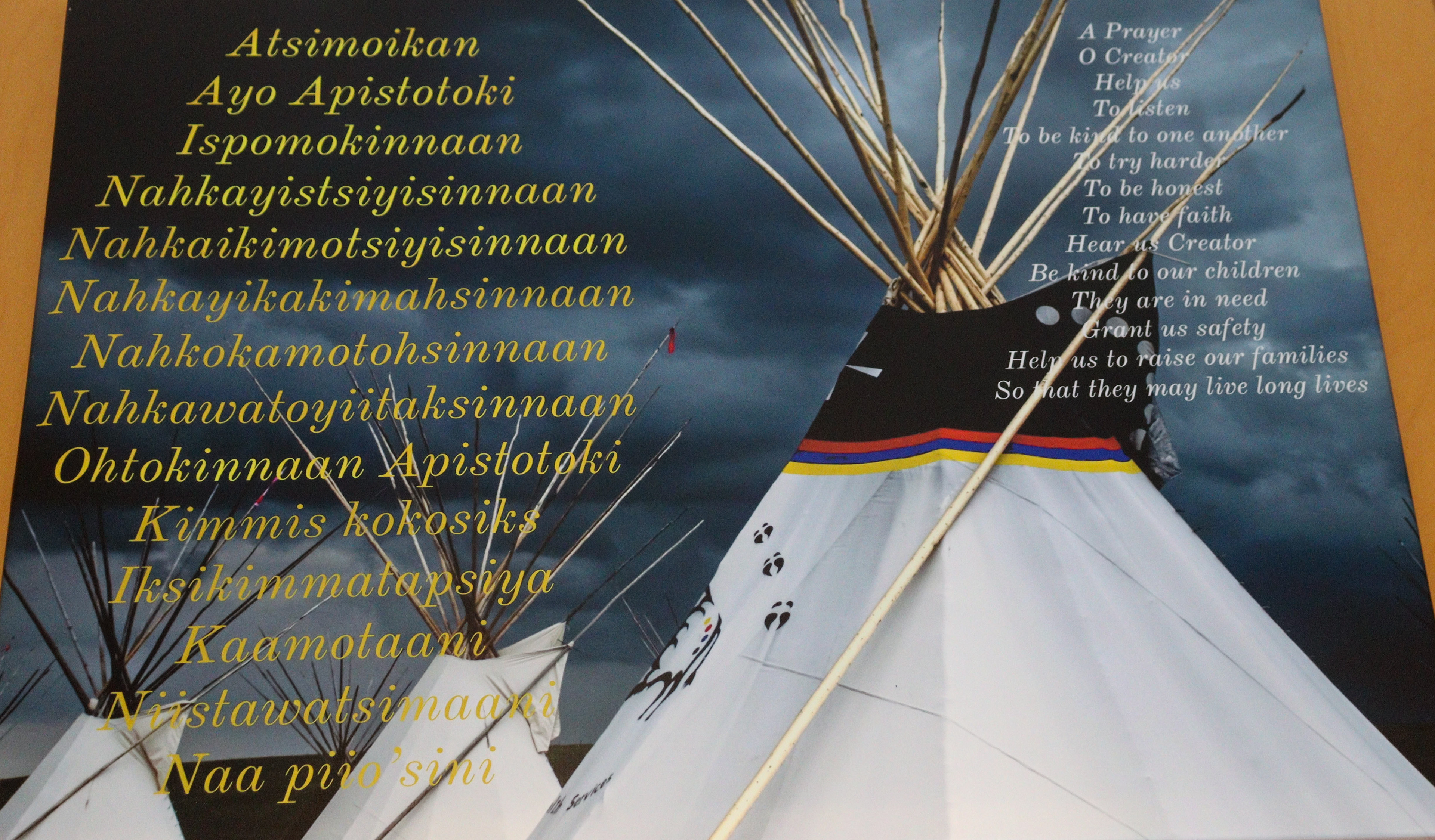Natoysopoyiis- a second home for Indigenous students at SAIT.
Natoysopoyiis at SAIT is one of the oldest — and one of the first — Indigenous student support spaces in the City of Calgary, offering academic services and advising.
Chinook Lodge Resource Centre now known as Natoysopoyiis (NAH-TOY SO-POH-YEES) primarily focuses on supporting Indigenous students at SAIT.
Thomas Snow is SAIT’s first-ever Indigenous knowledge keeper, providing cultural support and ceremonial community support at the centre.
Formerly called Chinook Lodge, the centre was renamed Natoysopoyiis by Clarence Wolflake, a spiritual leader from the Blackfoot people, during a ceremony in fall 2023.
The new name means ‘Holy Wind Lodge’ and is considered a safe space for Indigenous students, many of whom are living away from home for the first time.
Around 500 students who self-identify as First Nations, Métis, and Inuit access the available resources.
Heaven Deschamps says, “As an Indigenous student, I feel that the only place I can go for support is the Chinook Lodge.”
It welcomes students to connect with others and be a part of the Indigenous community. It is a place to gather and support each other.It makes the students feel grounded spiritually and culturally. It also gives a sense of belonging.
The main purpose of providing resources at Natoysopoyiis is to rectify the intergenerational harms, policies, and systems of oppression. “Well, Indigenous people have, through govt policy, been excluded from post-secondary institutions. Historically, there was a time when if you went on to post-secondary, you were stripped of your status and you were not allowed back in your home community. And so, to become educated that you had to leave your community or family and you wouldn’t be allowed back. And so that process is called “disenfranchisement.” When you look at Canada’s history and policies, they have been made to oppress Indigenous people,” said Snow.
The lodge has a small and intimate ceremonial space, where everyone is supposed to sit down in a circle with cushions. It offers community elders coming in to share knowledge. Smudging is available for Indigenous students. The centre also hosts community activities, public activities for a great and safe community.
Deschamps also said, “I feel that by engaging both Indigenous and Non-Indigenous students in acts of ceremony like smudging, powwows, sharing circles, blanket exercises, we can educate everyone on Indigenous values or ways of living that were systematically repressed in our communities. By celebrating our cultures and the lands that we live on, Indigenous students can feel celebrated and like they actually belong at SAIT. Non- Indigenous students on the other hand can also engage in a sense of community and respectful acknowledgement – two very important aspects of reconciliation.”
There are dancing exhibitions and powwow is planned for April. The SAIT powwow used to be well known and attended which is why they are bringing it back this year.
The lodge, given the historical policies has become an extremely important space in the journey of truth and reconciliation and as a part of the TRC calls to action that all institutions are bound by.
There are Indigenous student guide’s available that are brand new support handbooks. It has more information regarding the centre. It will also help create a greater community and spread awareness on campus. The handbook includes Indigenous specific recruitment as well for those interested.

This photo was shot on Marc. 7,2024 at Natoysopoyiis, SAIT, Calgary. A safe space for Indigenous students to connect with others.

This photo was shot on Marc. 7,2024 at Natoysopoyiis, SAIT, Calgary. The main purpose of dream catchers is to protect sleepers, especially children, from bad dreams, nightmares and evil spirits.



This photo was taken on Marc. 7, 2024 at Natoysopoyiis, SAIT, Calgary. A small and intimate ceremonial space, where everyone is supposed to sit down in a circle with cushions.





